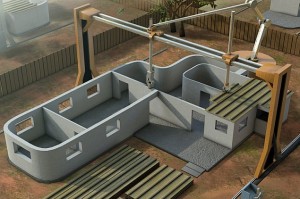Peter Lobner
We are only now starting to see the very broad implications of 3-D printing technology in many disciplines, some of which would not be considered as traditional “manufacturing” activities. Since the “ink” can be almost anything, and the scalability of the technology is vast, the potential applications are much broader than the early applications conceived so far.
Here are a couple of examples that illustrate the scalability of 3-D printing technology and show how the computer system driving the printer adds a layer of intelligence needed to manufacture remarkable products.
Where do you see applications for this technology?
Medical application: Treating burn victims
In Feb 2015, Wake Forest School of Medicine announced that it had designed, built and tested a printer capable of printing skin cells directly onto burn wounds. The “ink” is actually different kinds of skin cells. A scanner is used to determine wound size and depth. Different kinds of skin cells are found at different depths. With this data, a computer guides the printer as it applies layers of the correct type of cells to cover the wound. Read the story at the following link:
Another approach for treating burn victims was announced in 2014 by the University of Toronto. Their solution is called the “PrintAlive” 3-D bioprinter, which is capable of manufacturing continuous layers of tissue – including hair follicles, sweat glands and other human skin complexities – onto a hydrogel that can be used in place of conventional skin grafts. Read the story at the following link:
http://www.gizmag.com/printalive-biopronter-skin-grafts-burns/34057/
The students who developed the PrintAlive machine were the Canadian winners of the 2014 James Dyson Award, that is intended to that celebrate, encourage and inspire the next generation of design engineers.
Construction application: Building a house
This is a really large-scale application of 3-D printing technology that also requires a stock of certain parts that are more easily emplaced where needed rather than printing them in place (i.e., windows, doors, floors and ceilings). Additive manufacturing could be used to separately produce most of these emplaced items.
Read the article and see the 6 min video of the construction process at the following link:
